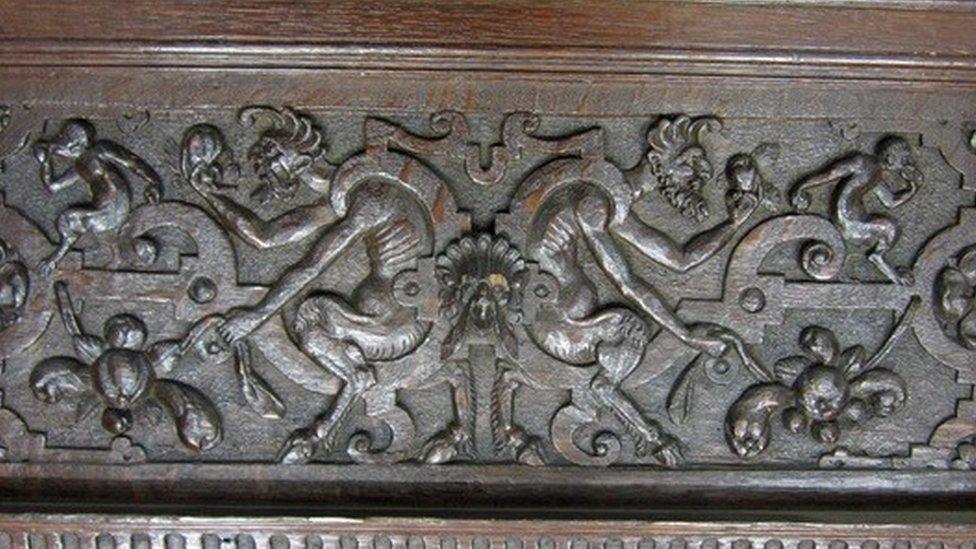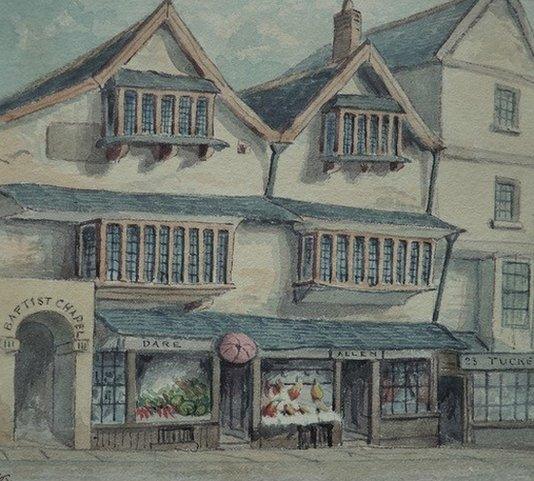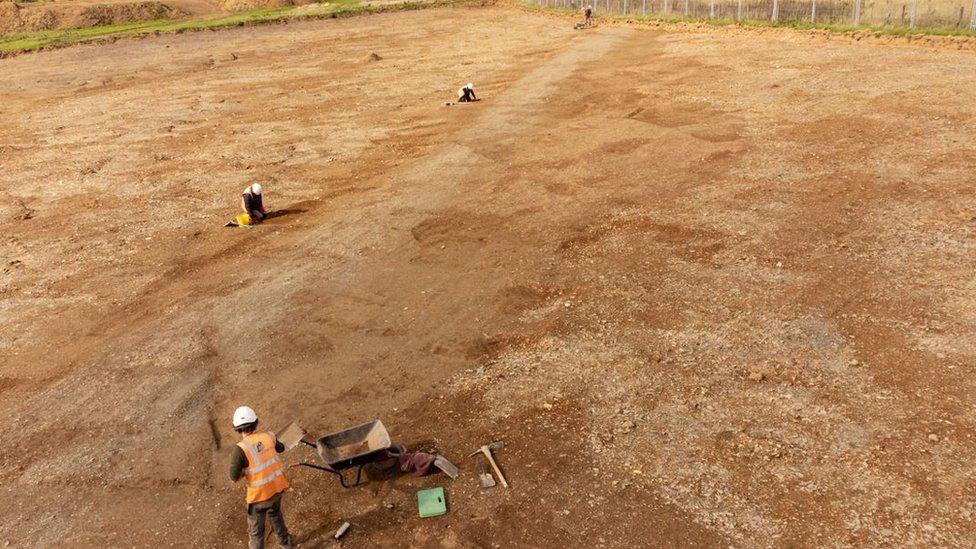Ancient panel origins traced to Exeter house
- Published

The wood panels are now held by the Victoria and Albert Museum in London
The origins of a set of Elizabethan wood panelling have been revealed more than 160 years after the demolition of its first home.
The panelling, held by the Victoria and Albert Museum in London, has been traced back to a house in Exeter.
Up until now, the story behind the museum piece had been a mystery.
University of Exeter historian Dr Todd Gray found the panelling was made for a 17th Century house in South Street that was knocked down in the Victorian era.
Dr Gray learned items from buildings destroyed by fire or redeveloped in Exeter are now in the town's Royal Albert Memorial Museum and Art Gallery, the Victoria and Albert Museum and the Metropolitan Museum in New York City.
Items held by the museums include windows, doors, fireplaces, panelling, roof tiles and statues.

The buildings containing the panelling were on South Street
Among them was the wood panelling from a pair of buildings that stood in front of a Baptist Chapel, which opened in January 1725.
The buildings were demolished in 1855 and materials including an "ancient oak carved work" with "wainscot of the napkin or drapery and the mask and lion's head patterns" were auctioned.
The panelling was bought for £50 in 1856 by the South Kensington Museum - known since 1900 as the Victoria and Albert Museum.
Records describe it as "Elizabethan oak room panelling removed from a house near Exeter" and it remains in the museum's collection.
Nick Humphrey, the museum's curator for furniture and woodwork 1300-1700, said: "At this early date in the museum's collecting, it was a large and significant acquisition, its appeal based on the wide range of crisply-carved Renaissance-style decorative motifs, and its good condition."
He added: "Until now the building from which the panelling was removed has been a mystery.
"Todd Gray's rediscovery of its location in South Street, along with tantalising clues as to the 17th Century residents of the house, is hugely significant."

Follow BBC News South West on X (formerly Twitter), external, Facebook, external and Instagram, external. Send your story ideas to spotlight@bbc.co.uk
- Published5 February 2023

- Published31 May 2023